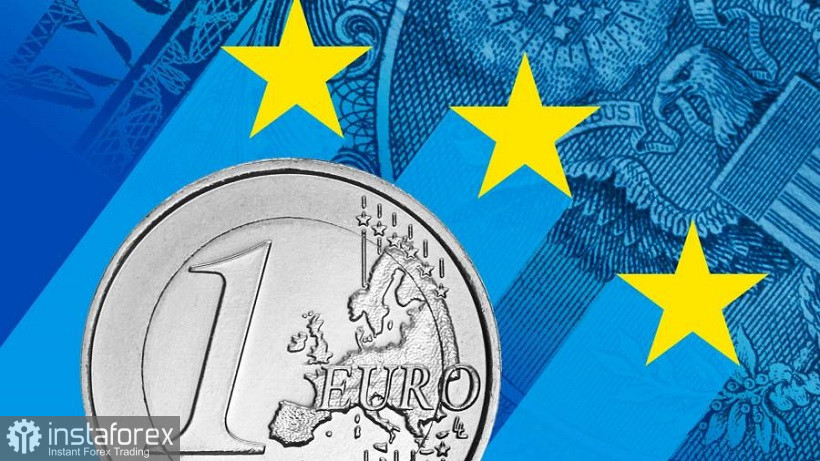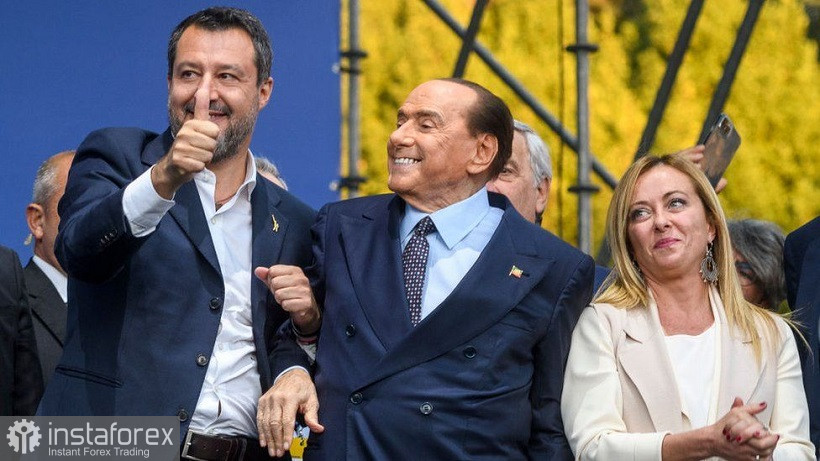The euro-dollar pair collapsed to the middle of the 95th figure at the start of the new trading week. Traders updated another 20-year low, but did not risk holding short positions at such lows. On a massive scale, EUR/USD sellers recorded profits, thereby extinguishing the downward impulse and provoking a corrective pullback to the opening level. However, this does not negate the fact that bearish sentiment prevails in the pair due to the unipolar fundamental background.

Today's downward impulse was provoked by several factors. First of all, it should be noted that at the start of trading, the greenback significantly strengthened its positions: the US dollar index soared up, reaching 114.40 (another 20-year high). The growth of geopolitical tensions against the backdrop of the intensifying energy crisis has led to increased demand for a safe dollar. Anti-risk sentiment bordering on panic allowed dollar bulls to organize a large-scale rally throughout the market. The largest was the pound, which, paired with the dollar, fell to 1.0345. And although the buyers of GBP/USD have already won back some of the lost positions, the depth of the fall, to put it mildly, is surprising.
But back to the euro-dollar pair. The massive risk aversion, a hawkish Fed, and rising treasury yields have all significantly added to the strengthening of the greenback. In particular, yesterday, Atlanta Fed President Raphael Bostic said that inflation is still too high, so "everything possible" must be done to reduce it.
This week, more than ten speeches by Fed representatives (including Jerome Powell) are expected, so the greenback can count on additional support here. Judging by the rhetoric of the accompanying statement, which was issued at the end of the September meeting, the members of the Committee are very determined. Their rhetoric will also be hawkish, at least for most of them.
And in general, the situation is in favor of a safe dollar. Amid rising geopolitical tensions, the Organization for Economic Cooperation and Development (OECD) today lowered its forecast for global GDP growth for 2023 to 2.2%. In June, expectations were more optimistic (2.8%).
And yet, the EUR/USD pair is declining not only due to the strengthening of the dollar but also to the weakening of the euro. The European currency is under additional pressure amid the parliamentary elections in Italy and the publication of disappointing data from the IFO Institute.
The preliminary results of the elections to the Italian parliament were announced today. The right-wing coalition won: the government will include the far-right Brothers of Italy party (its leader, Giorgia Meloni, is likely to become head of government), the right-wing populist Lega party, the center-right Forza Italia, Silvio Berlusconi, and those close to centrists "We are with Italy." Despite the fact that the coalition's victory was predictable, the fait accompli put additional pressure on the euro.
Italy's political landscape has changed drastically, with the technocrats of Mario Draghi's government replaced by the far right, who initially had strained relations with Brussels. Rome will correct its position not only in the socio-political sector (for example, by strengthening its anti-immigrant policy), but also in the economic one. It can already be assumed that the new coalition will discuss fiscal policy with Brussels more harshly.
Ahead of the election, Ursula von der Leyen warned the favorites of the race that the European Commission is ready to work with any democratic government in the bloc but that the EC has "effective tools" in case things go in a "difficult direction." It is clear that Brussels is much more comfortable with centre-left Italian governments, so the rise of the right to power is not good news for the euro.

The euro received another blow today from the German IFO institute. Thus, during the European session, an indicator of the business environment in Germany was published. This indicator is a good addition to the already published PMI report. Recall that the German figures last Friday showed negative dynamics: manufacturing PMI fell to 48 points, while services PMI collapsed to 45 points. The pan-European PMI indices repeated the trajectory of the German indicators, which came out much worse than the forecast values.
That is why reports from the IFO today provoked a certain volatility for the pair. They also turned out to be in the "red zone," worse than the predicted values. The German business environment indicator fell to 84 points, while the economic expectations indicator fell to 75 points. These are the worst results this year. Commenting on the published figures, an IFO representative said that almost all sectors of the German economy are in the red: the country is facing a recession. At the same time, they emphasized separately that the expectations of the retail business are "at historic lows."
By the way, returning to the OECD forecast published today, it is worth noting that according to the calculations of this organization, the eurozone economy in 2023 will grow by only 0.3%, while German GDP will decrease by 0.7%. Whereas summer forecasts assumed an increase in the GDP of the eurozone next year by 1.6%, Germany - by 1.7%.
Thus, the downward dynamics of EUR/USD is quite reasonable and logical, given the strengthening of the US currency and the simultaneous weakening of the euro. It is advisable to enter sales on the upward corrective pullbacks. Today, the support level (the target of the downward movement) has shifted to the area of the psychologically important level of 0.9600.
 English
English 
 Русский
Русский Bahasa Indonesia
Bahasa Indonesia Bahasa Malay
Bahasa Malay ไทย
ไทย Español
Español Deutsch
Deutsch Български
Български Français
Français Tiếng Việt
Tiếng Việt 中文
中文 বাংলা
বাংলা हिन्दी
हिन्दी Čeština
Čeština Українська
Українська Română
Română

